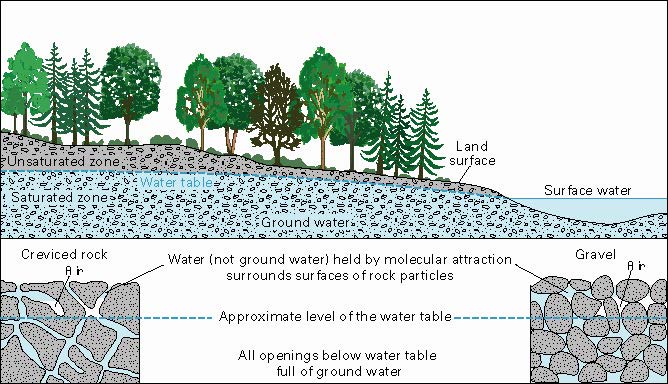Groundwater is found below the earth’s surface and includes water from bores, springs, wells and other sources. There are risks involved in using groundwater.
Groundwater may contain disease-causing microorganisms which can cause illness. Some groundwater supplies in Victoria have been found to contain high levels of chemical contaminants, such as arsenic, which can cause illness in people who drink the water. Groundwater containing high levels of salts such as sulfate and nitrate can also be harmful.
Other dissolved salts can make the water hard, which can result in scale build-up and corrosion in pipes. This can release harmful metals such as lead and copper into the water.
If mains water is available, use it instead of groundwate
Using a groundwater supply
If you use groundwater as a water supply, contact your local water agency for information on local groundwater quality and suitability of use.
It is important that you understand:
- the risks of using groundwater
- the quality of your groundwater supply
- what use(s) it is suitable for
- what type of treatment is needed to make groundwater suitable for its intended use – be aware that different treatments are required for different uses. For example, a treatment to remove harmful microorganisms does not remove other types of contaminants that may be present
- what it cannot be used for
- how to maintain and monitor your groundwater supply to be sure that it continues to be safe to use.
Anyone with a private water supply should have a water supply management to ensure water is suitable for the intended end use and does not pose a human health risk.
Key Victorian water agency websites have information on bore licensing and maintenance, including:
Hazards to groundwater quality
Groundwater quality can be influenced by factors such as the time of year, the depth at which the water is stored, the catchment area (the area of land from which the water is collected and channelled into the groundwater storage) and land uses in that area.
Groundwater can be contaminated by a range of sources including:
- sewage
- animal waste
- agriculture (pesticides and fertilisers)
- industrial pollution
- floodwater
- seepage from rubbish tips
- polluted stormwater
- chemical spills
- contaminated surface waters
- high levels of naturally occurring chemicals and radioactive substances.

Managing health risks from groundwater
Health risks from groundwater depend on the type and concentration of contaminants in the groundwater, and how often, for how long and in what ways people are exposed to the water (for example, drinking, inhalation, or skin contact).
Disease-causing microorganisms found in water supplies can cause diarrhoea, vomiting or other gastrointestinal illness. Some of these microorganisms can also lead to more serious illnesses, even death.
The people most at risk from unsafe water are the elderly, young children, pregnant women and people with weakened immune systems.
To reduce your risk of ill-health from using contaminated groundwater:
- Where a mains water supply is available, always use it for drinking.
- When mains water is not available, choose the next best source of water (see the risk hierarchy below). You may need to treat the alternative water supply to make it safe for drinking.


